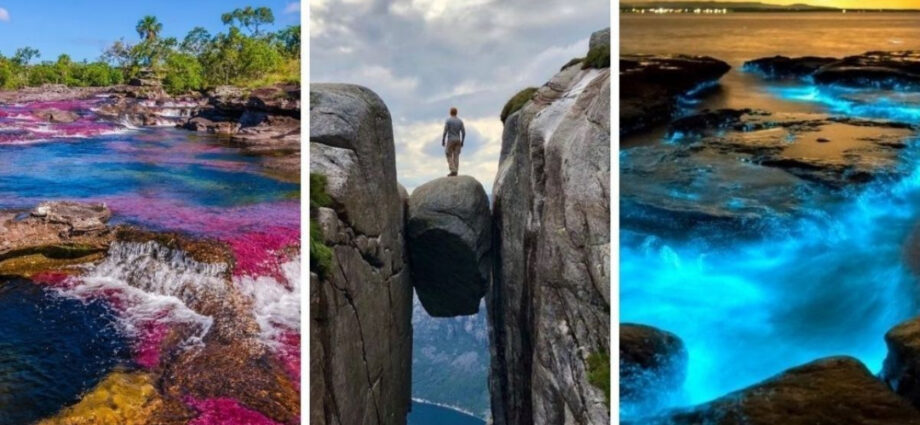Introduction
Natural phenomena are fascinating and awe-inspiring occurrences that happen around us every day. Some of these events are so rare that they occur only once in a lifetime or even less frequently. In this article, we will explore some of the best rare natural phenomena that occur on Earth.
The Northern Lights
The Northern Lights, or Aurora Borealis, is a natural light display that occurs in the high-latitude regions of the Earth’s atmosphere. The lights are caused by charged particles from the sun that collide with the Earth’s atmosphere. The result is a stunning display of colored lights in the sky, with green and pink being the most common colors. The best time to see the Northern Lights is during the winter months in the Arctic regions.
Bioluminescent Waves
Bioluminescent waves are a rare natural phenomenon that occurs when algae in the ocean emit light. The result is a stunning display of glowing blue waves that can be seen at night. The best places to see bioluminescent waves are in Puerto Rico, the Maldives, and the Gulf of California.
Fire Rainbows
Fire Rainbows, or circumhorizontal arcs, are a rare optical phenomenon that occurs when the sun is at a specific angle in the sky. The result is a colorful rainbow-like arc in the sky, with red being the most prominent color. Fire rainbows can be seen in the summer months in the mid-latitudes.
Moonbows
Moonbows, or lunar rainbows, are a rare natural phenomenon that occurs when the moon is bright enough to create a rainbow. The result is a stunning display of colored light in the night sky. Moonbows can be seen in places with strong moonlight, such as waterfalls or the ocean.
Volcanic Lightning
Volcanic lightning, or dirty thunderstorms, is a rare natural phenomenon that occurs during volcanic eruptions. The result is a stunning display of lightning strikes in the plume of ash and smoke. Volcanic lightning can be seen in places with active volcanoes, such as Japan, Italy, and Iceland.
Blood Falls
Blood Falls is a rare natural phenomenon that occurs in Antarctica. The result is a stunning display of red-colored water that flows from a glacier. The water is colored by iron oxide, which gives it a blood-like appearance.
Horsetail Falls
Horsetail Falls, or Firefall, is a rare natural phenomenon that occurs in Yosemite National Park. The result is a stunning display of orange and red-colored waterfalls that appear to be on fire. The best time to see Horsetail Falls is during the winter months when the sun is at a specific angle in the sky.
Sailing Stones
Sailing Stones, or sliding rocks, is a rare natural phenomenon that occurs in Death Valley National Park. The result is a stunning display of rocks that appear to move on their own. The cause of this phenomenon is still unknown, but it is believed to be caused by a combination of wind, ice, and water.
Catatumbo Lightning
Catatumbo Lightning is a rare natural phenomenon that occurs in Venezuela. The result is a stunning display of lightning that occurs over Lake Maracaibo. The lightning can be seen up to 140 times per hour and is caused by a unique combination of wind patterns and warm air.
Morning Glory Clouds
Morning Glory Clouds is a rare natural phenomenon that occurs in Australia. The result is a stunning display of long, tubular clouds that resemble a roll of cotton. The clouds can be up to 1,000 kilometers long and are caused by a unique combination of wind patterns and temperature differences.
Conclusion
Natural phenomena are a reminder of the immense power and beauty of our planet. From the Northern Lights to the Blood Falls in Antarctica, each rare natural phenomenon has its unique features that make them worth seeing. As nature enthusiasts, it is important to explore and appreciate these phenomena while also promoting conservation efforts to protect them.











